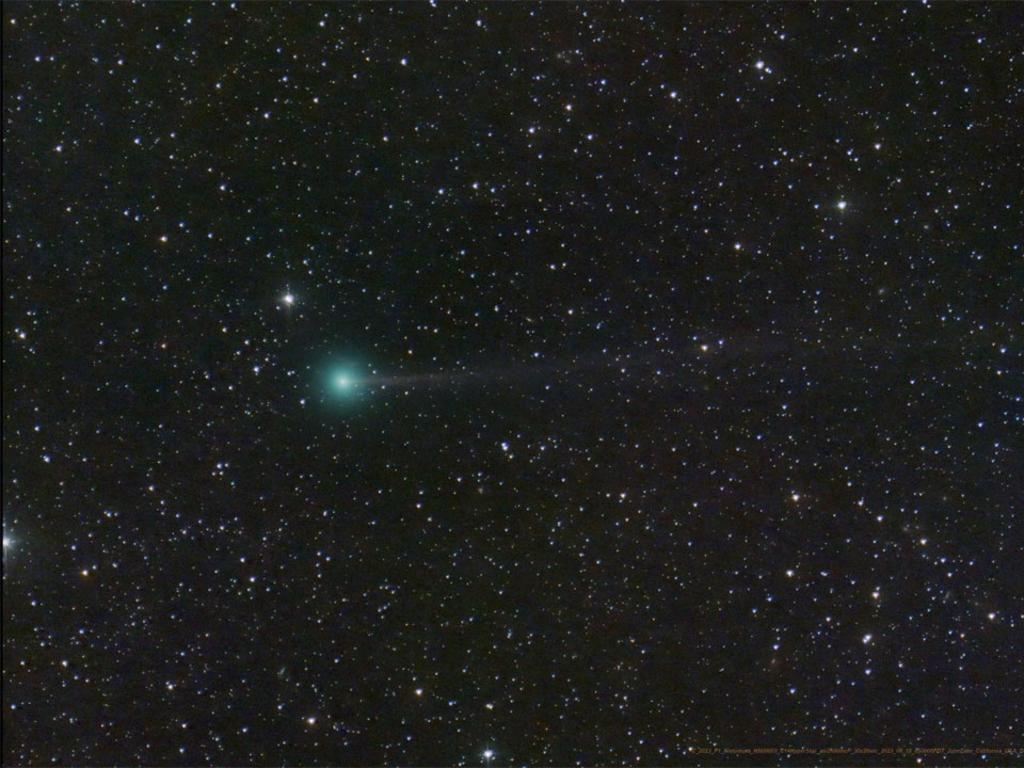Rare comet to streak across the skies for first time in centuries
A newly discovered comet is visible this month in a once-in-a-437-year occurrence. See how you can view it.
People in the Northern Hemisphere are able to get a glimpse of a comet that hasn’t been visible to humans for 437 years this weekend, with Australians able to catch sight of the phenomenon later this month.
The rare green comet, named Nishimura after the amateur Japanese astronomer who discovered it on August 11, is almost a kilometre wide and made from rock and ice.
It will pass within 78 million miles of Earth on September 12, according to a report from the Associated Press.
Paul Chodas, manager of NASA’s Centre for Near-Earth Object Studies, told the Associated Press that those hoping to see the comet should be prepared on September 12.
Stargazers will have to wake up about 90 minutes before dawn and look north about 10 degrees above the horizon, near the constellation Leo, where Comet Nishimura will brighten as it gets closer to the sun and then become more difficult to spot as it drops lower in the sky.

Nishimura will pass closer to the Sun than Mercury on September 17 and depart the solar system as long as it does not disintegrate during its trips near the Sun.
Mr Chodas believes the comet is “likely to survive its passage” and, if so, would be visible to people in the Southern Hemisphere sometime around the end of September.
“You really need a good pair of binoculars to pick it out, and you also need to know where to look,” Mr Chodas said.
It is rare that comets reach their moment of peak visibility so soon after being discovered, said Nicolas Biver, an astrophysicist at the Paris Observatory.
Motion of Comet #Nishimura (2023 P1) over 42 minutes on the morning of 04-Sep-2023. Very low altitude and through layers of haze. This image covers a field of view about the size of the moon. RedCat 51 / ZWO ASI533MC Pro camera. #Northumberlandpic.twitter.com/3yXDrnWEoQ
— Dr Adrian Jannetta ðŸ”🌒🇬🇧🇪🇺 (@AdrianJannetta) September 5, 2023
“Most are discovered months, even years before they pass closest to the Sun,” he told AFP.
“The best thing to do is look at the sky before sunrise, in a northeastern direction to the left of Venus, in a clear sky, free of pollution,” Mr Biver advised.
People with small binoculars will easily be able to enjoy the spectacle. But, if conditions allow, the comet may also be visible by the naked eye.
The comet’s tail is greenish, because it contains “more gas than dust,” Mr Biver said.
The comet only swings by the Sun every 437 years, a long orbital period which sees it spend much of its time in the freezing outer Solar System.
When comets approach the Sun from the vastness of space, the heat causes its ice core to turn into dust and gas, which form a long tail.
The Sun’s light reflects off this tail, allowing us to view comets from Earth.
Comet Nishimura, which has the scientific name C/2023 P1, will be 33 million kilometres from the Sun, which is less than a quarter of the distance between the Earth and the Sun, Mr Biver pointed out.
The comet will then pass harmlessly by Earth at a distance of approximately 125 million kilometres.
— With AFP
Originally published as Rare comet to streak across the skies for first time in centuries





